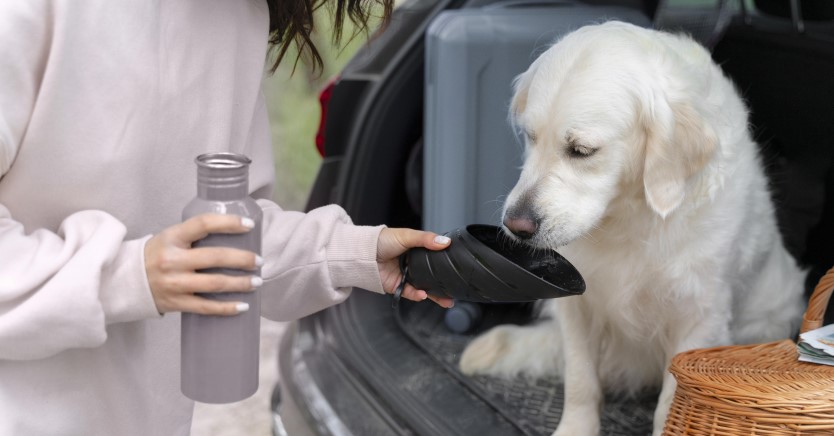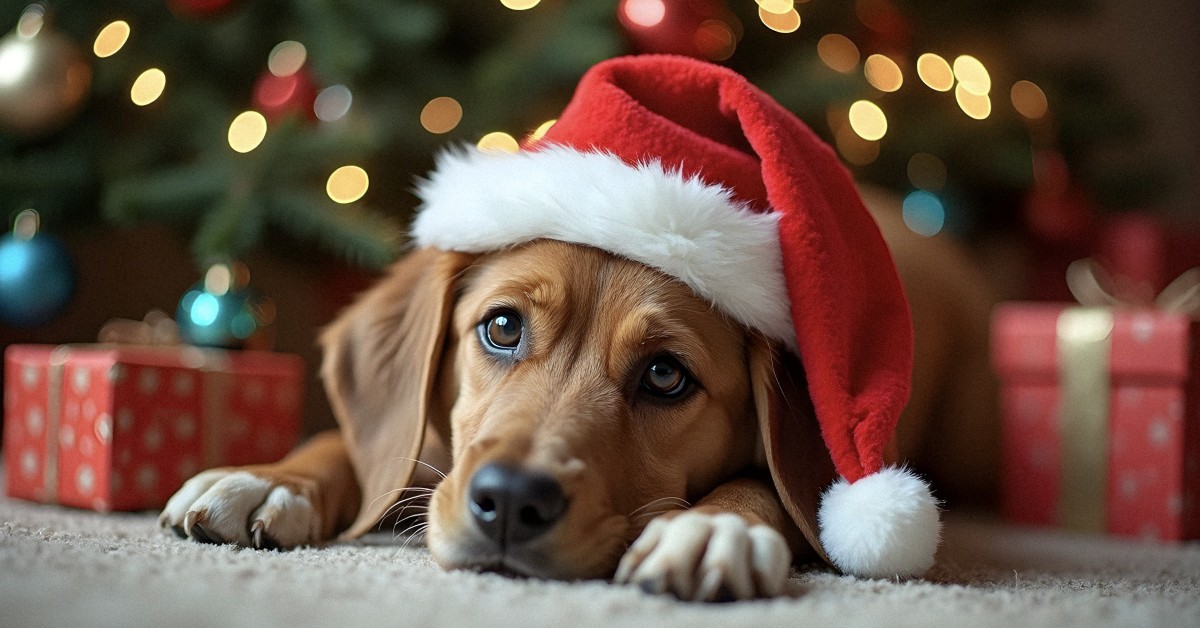Preventing Pet Dehydration in the Summer
Preventing dehydration in pets during the hot summer months can help you avoid a trip to the vet.

Warmer temperatures mean your pet will likely spend more time outside soaking up sun rays. While outside time shouldn’t be avoided completely, it is important to take certain precautions when allowing your cat or dog to walk, run, and play during the summer. Dehydration is a common condition that can have serious health consequences, and in rare cases, can be fatal. Fortunately, it is completely preventable when you take the necessary steps to prevent pet dehydration.
What Is Dehydration in Pets?
Pet dehydration is similar to dehydration that occurs in humans. It occurs when an animal loses more fluids than it is consuming. There are several ways that water can be lost from the body, such as through breathing, panting, urination, defecation, and vomiting. Moisture can even be lost via evaporation through the paw pads.
Several other things also happen when your pet is dehydrated. Your pet may begin to lose their ability to regulate body temperature. Their nerve activity and muscle function may also decline. Cats and dogs that suffer from dehydration also tend to have abnormal electrolyte counts. Their chloride, sodium, and potassium levels may also be low.
While dehydration may not seem like a big deal in the short term, it should always be taken seriously. If left to worsen, severe dehydration can be potentially fatal to animals as it causes the organs like the kidneys, liver, and heart, to shut down due to poor blood circulation and reduced cardiac output.
What Signs Should I Look for?
It may be difficult to determine if your cat or dog is dehydrated at first. Some of the most common signs of dehydration include:
- Dry Nose – An early sign of dehydration in pets is a dry nose. However, a dry nose can also be caused by other conditions, such as a fever.
- Lethargy – Animals that are dehydrated tend to appear lethargic. They may not want to move much and may simply rest.
- Excessive Drooling – Dogs that are dehydrated may drool excessively as their bodies attempt to naturally cool down.
- Sticky Gums – As dehydration gets worse over time, your pet may develop sticky gums. As the condition progresses, the gums may become dry.
- Loss of Appetite – Pets experiencing moderate dehydration often lose their appetite and may not want to eat even when tempted by their favorite treats.
- Loss of Skin Elasticity – Pull a section of skin up on your pet’s back. If it doesn’t spring back into place immediately, your pet may be moderately dehydrated.
Once dehydration reaches severe levels, your pet may experience more serious symptoms, such as diarrhea, vomiting, sunken eyes, and excessive panting that makes it difficult for them to breathe.
How Can I Prevent My Pet from Getting Dehydrated?
Dehydration is a common problem that has simple solutions. Keeping a close eye on your pet during the summer can help prevent dehydration and the problems that often follow, such as heat exhaustion and heat stroke. Some strategies to keep your pet well-hydrated include:
1. Always Keep Fresh Water Available
Don’t forget to refill your pet’s water bowl throughout the day. In the summer, your cat or dog will likely drink more often, meaning the bowl will need to be washed and refilled more regularly.
2. Encourage Your Pet to Drink
If you don’t think your pet is getting enough to drink, try some simple tips and tricks to encourage drinking. For example, you can put a small amount of broth into the water to entice your pet to drink.
3. Limit Vigorous Forms of Exercise
While your pet may still want to play during the summer, you’ll want to limit any vigorous activity and take frequent breaks. Dogs can quickly overheat when the temperature is high and may not stop until dehydration has already started to set in.
4. Provide Plenty of Shade
Long-term exposure to direct sunlight can quickly lead to overheating and dehydration. If you allow your pet outdoors, make sure that there are areas where it can go to find relief from the sun.
5. Introduce Wet Food Into Their Diet
Some cats and dogs naturally drink little water, which can become problematic during the summer when dehydration is a major risk. Consider including wet food in your pet’s diet which has a higher moisture content than dry kibble.
How Is Dehydration in Pets Treated?
If your pet appears to be dehydrated, it’s important to continue monitoring them as they recover. Provide small, frequent amounts of cool water to help your pet rehydrate. If your cat or dog refuses to drink, use a dropper or syringe to introduce water into their system. Be sure to go slow to prevent choking.
Also, offer raw food as it contains a lot of water. Raw food can help keep your pet hydrated while providing much-needed nutrients.
When Should I Contact My Vet?
If you suspect that your pet’s case of dehydration has gone from bad to worse, it may be time to call your veterinarian. Symptoms of severe dehydration, such as sunken eyes, shock, and collapse, warrant a call to a vet who can quickly replenish your pet’s fluids and increase the odds of a positive outcome.
Ready to start saving money on pet wellness care?
Then take a look at Mint Wellness, the pet wellness plan that provides fast reimbursement on routine pet care. Save on vaccinations, wellness exams, preventatives, dental, and more!
Learn More


